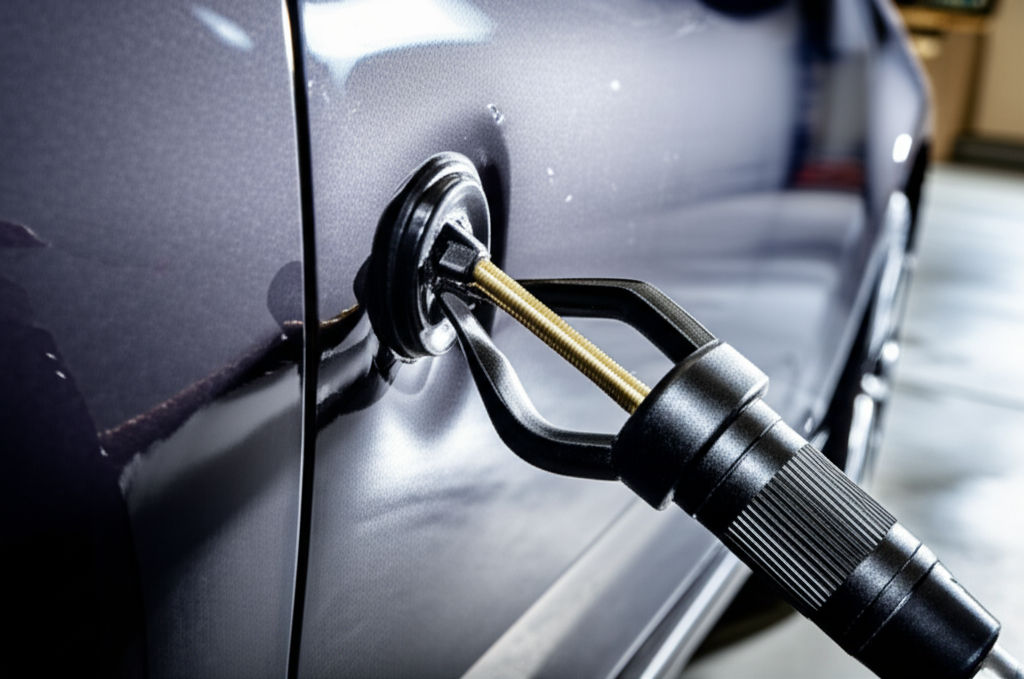Must-Know Vehicle Safety Features for Every Driver
Ellie Moore

Photo: Must-Know Vehicle Safety Features for Every Driver
Must-Know Vehicle Safety Features for Every Driver
In today’s fast-paced world, vehicle safety has never been more critical. Whether you’re a seasoned driver or new behind the wheel, understanding and utilizing the latest vehicle safety features can significantly enhance your driving experience and protect you and your loved ones on the road. This comprehensive guide delves into the must-know safety features every driver should be aware of, ensuring you stay informed and prepared.
Understanding the Importance of Vehicle Safety Features
Vehicle safety features are designed to prevent accidents, protect occupants during collisions, and assist drivers in maintaining control of their vehicles. With advancements in automotive technology, modern cars come equipped with an array of car safety features that go beyond traditional airbags and seatbelts. Embracing these technologies not only enhances your safety but also contributes to a more confident and enjoyable driving experience.
Essential Safety Features Every Driver Should Know
1. Anti-lock Braking System (ABS)
One of the fundamental safety features for cars, ABS prevents the wheels from locking up during sudden braking, allowing drivers to maintain steering control. This system is crucial for avoiding skids and ensuring the vehicle remains maneuverable in emergency situations.
- Benefits of ABS:
- Enhances vehicle control during braking
- Reduces stopping distances on slippery surfaces
- Minimizes the risk of accidents in sudden braking scenarios
2. Electronic Stability Control (ESC)
ESC is an advanced safety feature that helps prevent skidding and loss of control, especially during sharp turns or sudden maneuvers. By automatically applying brakes to individual wheels and adjusting engine power, ESC keeps the vehicle stable and on its intended path.
- Key Advantages:
- Improves handling in adverse conditions
- Reduces the likelihood of rollover accidents
- Enhances overall vehicle stability
3. Airbags
Airbags are a staple in vehicle safety features, providing critical protection during collisions. Modern cars are equipped with multiple airbags, including front, side, curtain, and knee airbags, to safeguard occupants from various angles.
- Types of Airbags:
- Front Airbags: Protect the driver and front passenger in frontal collisions
- Side Airbags: Shield occupants during side-impact crashes
- Curtain Airbags: Provide head protection in side and rollover incidents
- Knee Airbags: Reduce leg injuries by cushioning the knees during a crash
4. Backup Cameras
Backup cameras offer a clear view of the area behind the vehicle, significantly reducing the risk of collisions while reversing. This car safety feature is especially beneficial in preventing accidents involving pedestrians, children, and other vehicles.
- Advantages of Backup Cameras:
- Enhances visibility in blind spots
- Aids in parking and maneuvering in tight spaces
- Reduces the likelihood of backing into obstacles
5. Blind-Spot Monitoring
Blind-spot monitoring systems alert drivers to vehicles in their blind spots, providing an extra layer of safety during lane changes. These systems use sensors to detect nearby vehicles and issue visual or auditory warnings.
- Benefits of Blind-Spot Monitoring:
- Prevents side-impact collisions
- Increases driver awareness of surrounding traffic
- Enhances confidence during lane maneuvers
Advanced Driver Assistance Systems (ADAS)
Beyond the basic safety features, advanced driver assistance systems (ADAS) represent the forefront of automotive safety technology. These systems leverage sensors, cameras, and artificial intelligence to assist drivers in various aspects of vehicle control and accident prevention.
6. Adaptive Cruise Control (ACC)
ACC automatically adjusts the vehicle’s speed to maintain a safe following distance from the vehicle ahead. This advanced safety technology reduces driver fatigue during long trips and enhances overall traffic flow.
- Key Features of ACC:
- Maintains a preset speed
- Adjusts speed based on traffic conditions
- Enhances comfort and safety on highways
7. Collision Avoidance Systems
Collision avoidance systems use radar, cameras, and other sensors to detect potential collisions and take preventive actions. These systems can apply the brakes, steer the vehicle, or alert the driver to imminent dangers.
- Types of Collision Avoidance:
- Forward Collision Warning (FCW): Alerts drivers of potential frontal impacts
- Automatic Emergency Braking (AEB): Automatically applies brakes to prevent or mitigate a collision
- Lane Departure Warning (LDW): Notifies drivers if the vehicle drifts out of its lane unintentionally
Practical Tips for Maximizing Vehicle Safety
Understanding vehicle safety features is only part of the equation. To truly enhance your safety on the road, consider the following practical tips:
- Stay Informed: Regularly review your vehicle’s manual to understand all available safety features and how to use them effectively.
- Keep Features Enabled: Ensure that safety systems like ABS, ESC, and ADAS are activated and functioning correctly.
- Maintain Your Vehicle: Regular maintenance checks can ensure that safety features are in optimal condition. This includes inspecting brake systems, airbags, and sensors.
- Practice Safe Driving Habits: Combine technological safety features with responsible driving behaviors, such as avoiding distractions, adhering to speed limits, and staying alert.
Real-Life Examples Highlighting the Importance of Safety Features
Consider the case of John, a daily commuter who experienced a sudden braking scenario on a wet road. Thanks to his car’s ABS and ESC, John was able to maintain control and avoid a potential collision. Similarly, Sarah, a new driver, benefited from her vehicle’s blind-spot monitoring and backup camera while parking, preventing a minor accident that could have resulted in significant damage.
Future Trends in Vehicle Safety
The landscape of vehicle safety features is continually evolving, with ongoing advancements aimed at making driving even safer. Emerging technologies such as autonomous driving, enhanced sensor integration, and improved communication systems between vehicles and infrastructure promise to revolutionize road safety.
- Autonomous Driving: Future vehicles may offer fully autonomous driving capabilities, reducing human error the leading cause of accidents.
- Vehicle-to-Everything (V2X) Communication: This technology allows vehicles to communicate with each other and with road infrastructure, enhancing situational awareness and preventing collisions.
- Enhanced Sensor Technologies: Improved sensors will provide more accurate and comprehensive data, enabling better decision-making by both drivers and automated systems.
Conclusion: Prioritize Safety for a Secure Driving Experience
Investing in and understanding vehicle safety features is paramount for every driver. These technologies not only protect you and your passengers but also contribute to safer roads for everyone. Stay informed, embrace advancements, and practice safe driving habits to make the most of these essential safety features.
Ready to enhance your driving safety? Explore your vehicle’s safety features today, share this article with fellow drivers, and leave your comments below about which safety technologies have made a difference in your driving experience.
Frequently Asked Questions (FAQ)
1. What are the most important vehicle safety features to look for when buying a new car? When purchasing a new car, prioritize features such as Anti-lock Braking System (ABS), Electronic Stability Control (ESC), multiple airbags, backup cameras, blind-spot monitoring, and advanced driver assistance systems like Adaptive Cruise Control (ACC) and Collision Avoidance Systems.
2. How do backup cameras enhance vehicle safety? Backup cameras provide a clear view of the area behind the vehicle, reducing blind spots and preventing collisions while reversing. They are particularly useful in avoiding accidents with pedestrians, children, and other vehicles.
3. Are advanced driver assistance systems (ADAS) expensive to maintain? Maintaining ADAS can vary in cost depending on the specific system and vehicle. Regular maintenance and timely repairs are essential to ensure these systems function correctly, but many features are built into the vehicle’s standard maintenance schedule.
4. Can older vehicles be retrofitted with modern safety features? Some older vehicles can be upgraded with certain modern safety features, such as backup cameras or blind-spot monitoring systems. However, more advanced systems like ESC or ADAS may require significant modifications and are not always feasible to retrofit.
5. How often should I check my vehicle’s safety features? Regularly inspect your vehicle’s safety features as part of your routine maintenance schedule. Check systems like brakes, airbags, and sensors monthly and have a professional inspection at least once a year to ensure all safety technologies are functioning properly.
Finance & Investment
View All
October 28, 2025
World Finance Payment Help GuideMaster expert SEO content to stand out. Learn to create valuable, authoritative content that ranks high, builds trust, and drives traffic.
Ellie Moore

May 3, 2025
Nissan Finance Phone SupportUnlock online visibility & growth with expert SEO content. Blend technical optimization with valuable, user-centric writing that truly helps your audience.
Ellie Moore

August 19, 2025
Exeter Finance Auto Loans ReviewMaster expert SEO content to dominate search. Create high-value, authoritative content that Google and users love, leveraging E-E-A-T for top rankings.
Ellie Moore

June 17, 2025
MS in Finance What You Need to KnowUnlock higher rankings & engaged audiences with expert SEO content. Learn to create valuable, E-E-A-T-driven content that satisfies search engines & users.
Ellie Moore

July 25, 2025
Google Finance TSLA Price TrendsGo beyond keywords! Create expert SEO content that ranks high, resonates with users, and builds authority using E-E-A-T and user intent strategies.
Ellie Moore

April 17, 2025
Ondo Finance and the Future of DeFiUnlock top rankings & authority with expert SEO content. Learn the blueprint to create valuable, E-E-A-T-driven material that stands out.
Ellie Moore
Insurance
View AllNavigate dental insurance with our guide. Find essential plans for comprehensive coverage, financial security, and peace of mind for you or your business.
Ellie Moore
Find the cheapest car insurance deals! This guide helps policyholders save money and agents offer competitive rates for smart, affordable coverage.
Ellie Moore
Navigate healthcare's future. Discover essential health insurance companies for robust, affordable coverage, ensuring peace of mind for policyholders & pros.
Ellie Moore
Secure your home with premium insurance. This guide helps you navigate quotes, find comprehensive protection, and achieve peace of mind against unforeseen damag...
Ellie Moore
Overpaying for car insurance? Discover top-rated solutions for optimal coverage & value. Protect your finances with our comprehensive guide.
Ellie Moore
Insure your valuables! Learn what’s covered, from antiques to art, and how to ensure proper protection for collectibles.
Ellie Moore
Education
View AllUnderstand dyslexia and discover effective ways to support dyslexic students in the classroom. Learn proven strategies to improve learning outcomes.
Read MoreOpen educational resources are breaking down barriers to knowledge. Learn how free learning materials are changing the global education scene.
Read MoreHelp students master metacognition! Learn how teaching students to think about their thinking can improve problem-solving and critical thinking skills.
Read MoreThe digital divide limits education access. Explore strategies and initiatives to bridge this gap and ensure global learning equality.
Read MoreUnschooling is redefining education. Learn how this self-directed approach works and why more families are embracing it as an alternative to traditional schooling.
Read MoreStrong school-community partnerships can drive student success. Discover the benefits and strategies for effective collaboration.
Read MorePopular Post 🔥
View All
1
2
3
4
5
6
7
8
9
10
Health






Automotive
View All
July 10, 2025
Top Tips From Expert Automotive Locksmiths
Get expert tips from automotive locksmiths! Your ultimate guide to car key & lock security, covering lockouts, lost keys, and programming.

September 2, 2025
How To Use An Automotive Dent Puller Effectively
Banish car dents like a pro! Our guide shows you how to use automotive dent pullers for DIY repair, saving money & restoring your car's look.

August 20, 2025
Best Automotive Subwoofer Picks This Year
Transform your car audio! Discover the best automotive subwoofers for deep bass & immersive sound. Get expert picks & choose your ideal car subwoofer.

September 7, 2025
Blue Ridge Automotive Trusted Car Repairs
Worried about car repairs? Learn why trust matters. Blue Ridge Automotive offers reliable service, ensuring your safety, savings, and peace of mind.

September 8, 2025
Country Automotive Local Experts Who Care
Country driving demands trusted auto repair. Learn why local experts who genuinely care are essential for your vehicle's reliability and your peace of mind.

August 4, 2025
Best Automotive Battery Options For Your Vehicle
Demystify car batteries! Discover why they're vital, understand CCA, Ah, & RC, and pick the perfect battery for reliable starts & vehicle longevity.

















